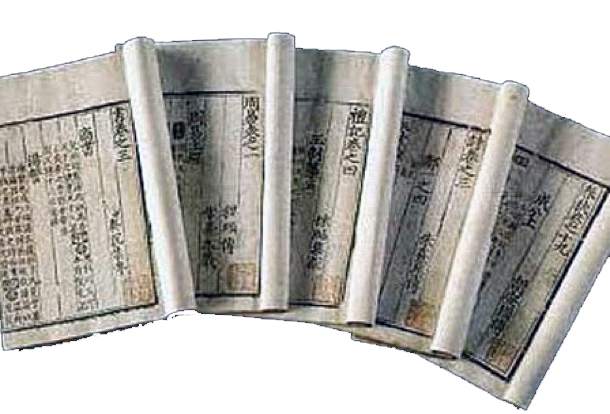At the heart of Chinese thought stand the five great classics, the traditional, time-honored works that define and originate Chinese culture and history. Chinese history, as the Chinese narrate it, blazes into existence with the great, partly divine heroes who teach the early Chinese all the arts of civilization: writing, law, architecture, art, and so on.
These blatantly mythical figures are followed by three great sage kings, Yao, Shun, and Yü. The latter stands as the foundation of the Xia dynasty. During the various cycles of dynastic change, from the Xia to the Shang to the Zhou, the Five Classics, or the Confucian Classics (even though they are not written by Confucius), were written down, or supposedly written down. These Five Classics constituted the program of learning for anyone in the upper classes, the ruling classes, or the educated classes. The Classics not only recorded early Chinese history infallibly, they also completely contained all the ethics and wisdom of China.
Out of early divination practices from the Shang Dynasty comes the first classic, or what is traditionally considered the first classic, the I ching, or The Book of Changes. Divination utilized stalks of mil-foil laid out on the ground. The I ching is a manual on reading the various diagrams resulting from laying out these stalks. The most important aspect of the work are the “wings,” a set of additional texts that explain the metaphysical aspects of these diagrams. Although traditionally regarded as the work of Confucius, these wings were probably written down in the Han period. The I ching throughout Chinese history has been regarded as the fullest description of the metaphysical structure and dynamics of the universe.



The second Classic is The Book of History or Shujing, which is a set of documents (speeches, laws, etc.) from the Xia to the Zhou dynasties. In China, this book is regarded as a relatively infallible collection of documents; in the West, the book is considered mainly a collection from the middle or late Zhou period and so relatively unreliable as a source for the earlier dynasties. Confucius, according to tradition, had a hand in this book as well, assembling, editing, and commenting on the documents. The Book of History has served throughout Chinese history as a repository of political wisdom, as the source book of exemplary models of government.
The Classic traditionally ascribed the third position is the Shih ching, or the Book of Odes. This book is a collection of three hundred poems from the Zhou dynasty. Confucius, again, is traditionally regarded as the editor and compiler of the book.
Fourth comes the Ritual , which is actually several books on philosophy, rituals, and even table manners. The most important of these books is the Li chi, or The Book of Rites , which catalogs the many rituals that make up ancient Chinese life.
Finally comes the Chūnqiū, or The Spring and Autumn Annals, a history of a single Chinese province from about 700 to 500 BC. Confucius, again, lived in this province and supposedly assembled these annals himself.
What were the salient features of early Chinese thought?
First, the Chinese believed that heaven, t’ien, governed the world in its entirety, including human affairs; in fact, heaven was especially and scrupulously attentive to all things human, especially government. As a result of this interest, heaven frequently intervened in governmental affairs: when a dynasty grew corrupt, heaven intervened and overthrew that dynasty and replaced it with a new one.
This concept was called the “mandate of heaven” or t’ien ming. Rulers were put in place by heaven and could continue to rule as long as they did so with justice and wisdom. When they ceased to rule in the best interests of their subjects, the mandate of heaven required that they be overthrown by someone else. Finally, the ancient Chinese believed that their ancestors continued to live among them and so needed to be consulted, prayed to, appeased, and placated.
